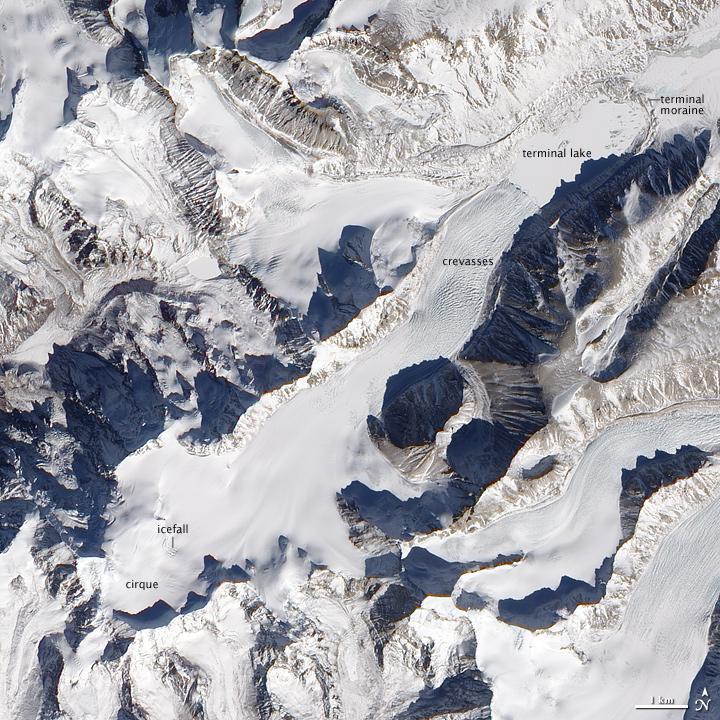Himalayan glacier #

Shown in this natural-color satellite image, mountains on either side of the glacier cast long shadows to the northwest. From a bowl-shaped cirque, the glacier flows downhill.
Where the ice passes over especially steep terrain, ripple marks on the glacier surface indicate the icefall. Northeast of the icefall, the glaciers surface is mostly smooth for several kilometers until a network of crevasses mark the surface.
At the end of the glaciers deeply crevassed snout sits a glacial lake, coated with ice in this wintertime picture. Just as nearby mountains cast shadows, the crevassed glacier casts small shadows onto the lakes icy surface.
This glacial lake is bound by the glacier snout on one end, and a moraine - a mound formed by the accumulation of sediments and rocks moved by the glacier - on the other.